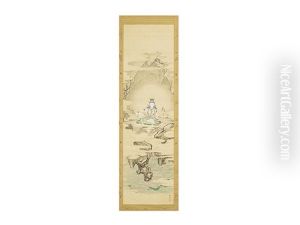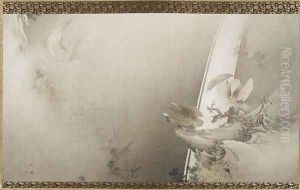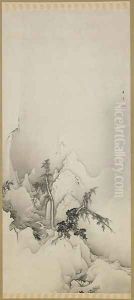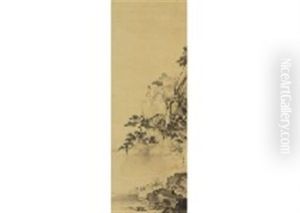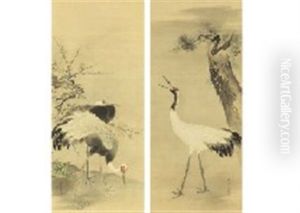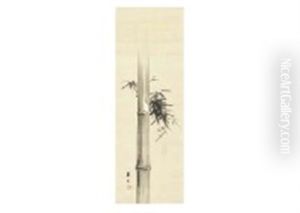Hogai Kano Paintings
Hogai Kano was a pivotal figure in the world of Japanese art, marking a transitional period where traditional Japanese art began to intersect with Western influences. Born in 1828, Hogai was part of the esteemed Kano school of painting, which had been a dominant force in Japanese art since the 15th century, primarily serving the needs of the feudal lords and the samurai class. The Kano school was known for its rigorous training methods and adherence to the stylistic qualities that exemplified the aesthetics of the Muromachi (1336–1573) and Momoyama (1573–1603) periods, focusing on themes such as landscapes, birds, and flowers, painted with a strong sense of line and a vivid use of color.
During Hogai's lifetime, Japan was undergoing significant changes. The Meiji Restoration of 1868 marked the end of the feudal system and the beginning of Japan's rapid modernization and Westernization. These changes had a profound impact on the arts, as traditional patronage systems eroded and artists sought new sources of support and inspiration. Hogai Kano embraced these changes, incorporating Western techniques and perspectives into his work while maintaining a deep respect for traditional Japanese painting methods.
Despite his efforts to adapt and innovate, Hogai faced considerable challenges in his career. The shifting tastes of the era and the influx of Western art made it difficult for traditional artists to find patronage. For much of his life, Hogai struggled with financial instability and obscurity. It was not until the late 19th century, towards the end of his life, that his work began to receive the recognition it deserved. His painting 'Hibo Kannon', which depicts the Buddhist deity of mercy, is considered a masterpiece and reflects Hogai's skill in blending the spiritual depth of traditional Japanese art with the realism and spatial techniques of Western painting.
Hogai Kano died in 1888, but his legacy lived on, influencing the development of Nihonga, a movement that sought to modernize Japanese painting while preserving its unique traditions. Today, Hogai is celebrated as a pioneering figure who bridged the gap between the old and the new, laying the groundwork for future generations of Japanese artists to explore and innovate within their rich artistic heritage.
